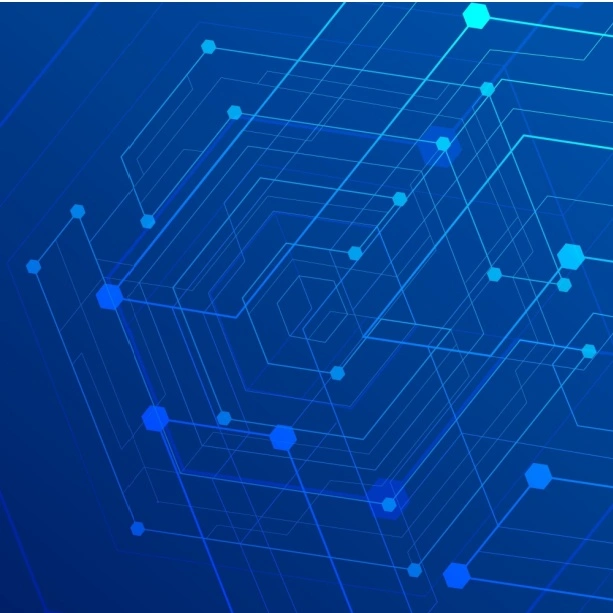Traditional asset tracking solutions often rely on centralized cloud computing architectures, which, while effective in more traditional or small-scale scenarios, may fall short in meeting the demands of modern-day business. Enter edge computing: a game-changing paradigm that promises to revolutionize asset tracking by bringing data processing and analysis closer to the source of the data. Let’s delve into why edge computing is not just advantageous but a necessary component of a robust asset tracking solution. From reducing latency and enabling immediate decision-making to ensuring offline operation and enhancing data security, edge computing offers a host of benefits that address the shortcomings of traditional approaches. Explore the pivotal role of edge computing in optimizing asset tracking processes and driving operational excellence in various industries.
Increase Your ROI by Investing in AirFinder Everywhere
- Loss Prevention. Reduce the amount of loss that occurs during the supply chain process
- Location Coverage. AirFinder Everywhere uses a combination of GPS, Cellular, and WiFi to determine location everywhere
- Security Alerts. Know when a delay in shipment has occurred so the problem
can be addressed immediately.
What is Edge Computing?
Edge computing refers to the practice of processing data closer to its source rather than relying solely on distant data centers. In essence, it brings computation and data storage closer to where it is needed, whether that's a factory floor or a third-party location. This approach aims to reduce latency, enhance performance, and improve efficiency in data processing tasks. Unlike traditional cloud computing, where data is sent to centralized servers for processing, edge computing distributes these tasks to local devices or edge servers located near the data source. In doing so, it minimizes the time it takes for data to travel back and forth between devices and servers, thereby reducing delays and improving real-time processing capabilities.
By deploying edge servers or devices in close proximity to data sources, edge computing drastically reduces the distance data needs to travel, thereby minimizing latency. One of the primary mechanisms through which edge computing reduces latency is by enabling localized data processing. Instead of sending raw data to distant cloud servers for analysis, edge devices can perform initial data processing and filtering tasks locally. This allows for quicker extraction of relevant information, reducing the amount of data that needs to be transmitted over the network. Edge computing is particularly relevant in scenarios requiring quick decision-making or where network connectivity is limited or unreliable. In industrial settings, edge computing allows for immediate analysis of sensor data to optimize production processes and detect anomalies in machinery. Edge computing also offers benefits in terms of data privacy and security by keeping sensitive information local rather than transmitting it over the internet to remote servers.
The increasing demand for real-time data processing is driving the adoption of edge computing across logistics operations. As technology continues to advance, edge computing is poised to play a pivotal role in shaping the future of computing by enabling faster, more responsive, and more efficient systems that can meet the demands of an increasingly connected and data-driven world.
Edge Computing vs. Cloud Computing
Edge computing and cloud computing represent two distinct paradigms in the realm of data processing and storage, each with its own set of advantages and limitations. Cloud computing involves the use of centralized servers located in data centers to store and process data, providing scalability, flexibility, and accessibility over the internet. On the other hand, edge computing brings computation and data storage closer to the data source, minimizing latency and enhancing real-time processing capabilities.
The key difference between the two approaches lies in their geographical distribution of resources. Cloud computing relies on centralized data centers typically located in remote locations, while edge computing distributes computing resources to the "edge" of the network, closer to where data is generated. This difference in distribution has significant implications for latency-sensitive applications where real-time decision-making is critical.
Edge computing offers low-latency processing by reducing the distance data needs to travel, enabling faster response times and improved performance for applications that require immediate insights or actions. In contrast, cloud computing provides centralized management and scalability, taking longer to collect and send important data. Housing data in a centralized location also leaves room for security breaches. In logistics operations, edge computing is the wiser technology choice, especially when using it in asset tracking operations.
How To Use Edge Computing In Asset Tracking
Edge computing has a profound impact on data latency, addressing one of the most critical challenges faced by modern data-driven applications. Traditional cloud computing architectures often result in significant latency, which is unideal for applications requiring real-time or near real-time responses. Edge computing mitigates this latency by bringing computational resources closer to where data is generated, processed, and consumed—right at the edge of the network. Edge computing facilitates real-time decision-making by enabling rapid response to events or triggers detected at the edge. When it comes to commercial asset tracking, real-time data is essential to have. Knowing the moment an asset goes missing is more helpful than finding out a few minutes or even hours later.
Edge computing also enables the distribution of computational workloads across a decentralized network of edge devices, rather than relying solely on a centralized cloud infrastructure. This distributed processing capability not only improves scalability and reliability but also helps to alleviate network congestion and bandwidth constraints. By offloading computational tasks to nearby edge nodes, organizations can optimize resource utilization and ensure timely delivery of services to end-users.
Low data latency is paramount for an effective asset tracking system, as it directly impacts the accuracy, responsiveness, and reliability of location information. As a fleet manager, the ability to monitor the location, status, and condition of assets in real time is crucial for optimizing operations, ensuring regulatory compliance, and minimizing losses. Low latency enables asset tracking systems to provide up-to-the-minute updates on asset whereabouts and conditions, enabling organizations to quickly respond to changes, identify potential issues, and make informed decisions. For example, low latency allows for real-time tracking of shipments, enabling fleet managers to proactively address delays, reroute shipments, or adjust schedules to meet customer demands. Similarly, low latency allows for condition monitoring in real time. Certain shipments are full of temperature sensitive assets. Knowing the real-time temperature is essential for safe transportation. An asset tracker with edge computing technology allows fleet managers to be alerted the moment the temperature falls out of range so the problem can be addressed before spoilage occurs. Moreover, asset tracking software that uses edge computing enhances the asset tracking systems' ability to monitor asset health and performance metrics in real-time, enabling predictive maintenance and minimizing downtime. By continuously collecting and analyzing data on asset usage, fleet managers can detect anomalies before they escalate into costly issues.
Asset tracking solutions based on edge computing are essential for ensuring the security and integrity of assets, especially in high-risk environments or sensitive industries. By providing immediate alerts and notifications in response to unauthorized access attempts, theft, or tampering, asset tracking systems can help mitigate security risks and protect valuable assets from loss or theft. Edge computing, as opposed to cloud computing, is critical for asset tracking systems to deliver accurate, timely, and actionable insights that drive operational efficiency, improve asset utilization, and enhance overall business performance.
The Future of Edge Computing
The future of edge processing is poised to revolutionize how we interact with data in virtually every aspect of our lives. As our world becomes increasingly interconnected through IoT, edge processing is emerging as a crucial component in managing the vast amounts of data generated by these interconnected devices. One of the most significant trends shaping the future of edge processing is its integration with AI and machine learning technologies. By leveraging AI and ML algorithms at the edge, devices can make intelligent decisions in real time without relying on constant communication with centralized servers. This not only reduces latency and bandwidth requirements but also enhances the overall efficiency and responsiveness of edge-enabled systems. This is made even more useful by using edge computing as a part of asset tracking technology which provides the data AI needs to be successful. As edge computing capabilities continue to evolve, we can expect to see increasingly sophisticated edge processing solutions that are capable of handling complex data analytics, predictive modeling, and even autonomous decision-making at the edge. Additionally, advancements in edge security protocols and privacy-preserving techniques will be essential in ensuring the integrity and confidentiality of data processed at the edge. Edge computing is ultimately reshaping the way we perceive and harness the power of data in our increasingly connected world.
Will You Choose An Asset Tracking System That Utilizes Edge Computing?
Our solution, AirFinder Everywhere, utilizes edge computing for data processing. It’s important to our customers to ensure the security of their data and also receive location information in real time. Using edge processing allows us to fulfill the needs of our customers so they can make improvements to their operations. The integration of edge computing into asset tracking solutions is not just a luxury but a necessity in logistics operations. By leveraging edge computing technologies, organizations can overcome the limitations of traditional asset tracking solutions that utilize cloud computing and unlock new levels of efficiency, responsiveness, and scalability. The ability to process data at the edge enables real-time decision-making, reduces latency, and enhances the accuracy and reliability of tracking information. Edge computing empowers fleet managers to harness the full potential of IoT devices, sensors, and data analytics, enabling them to gain deeper insights into asset performance, optimize resource utilization, and drive innovation across various industries. As we continue to witness advancements in edge computing technologies and the proliferation of connected devices, the role of edge computing in asset tracking solutions will only become more indispensable. If you are looking for an asset tracking solution that uses edge computing or want to learn more about how this solution works, book a demo with our team of experts.





